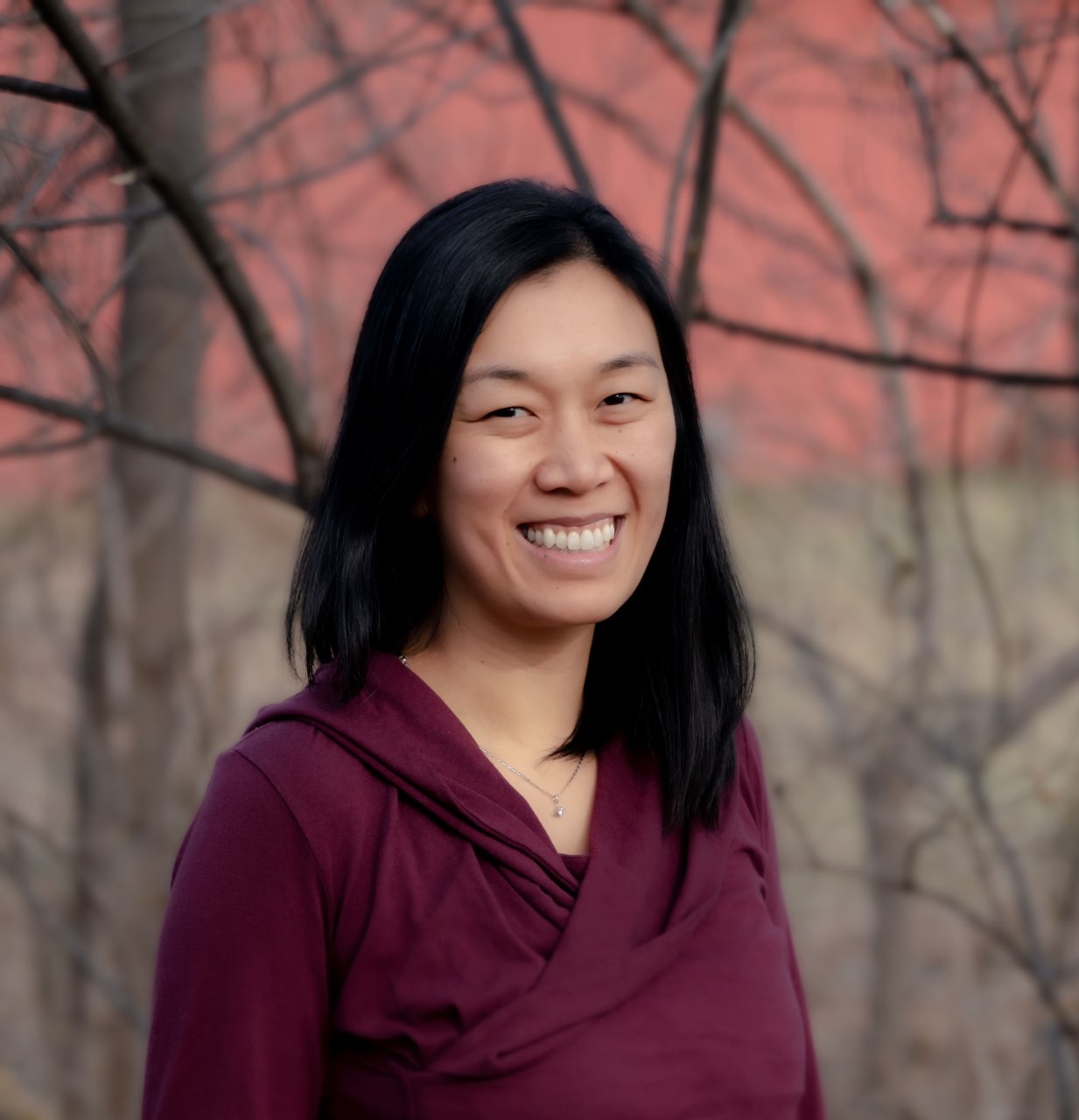
The Au Sable Institute is a Christian environmental education center in Mancelona, Michigan. This post is the fifth of five excerpts from the Au Sable Institute’s 2021 workbook Liturgies of Restoration ¸ a five-week study on how our habits can shape us into people who serve, protect, and restore God’s earth. Additional practices and resources mentioned here may be found in the workbook. Graduate students and emerging scholars can order copies of the workbook and also sign up for a fall online workbook study hosted by Au Sable Institute by clicking here. We thank Liuan Huska and the Au Sable Institute for sharing these resources with the Emerging Scholars Network.
____________________
“For the creation waits in eager longing for the revealing of the children of God;
for the creation was subjected to futility, not of its own will but by the will of the one who subjected it,
in hope that the creation itself will be set free from its bondage to decay and will obtain the freedom of the glory of the children of God.”
Romans 8:19-21
Since 1970, over 20 percent, or more than 280,000 square miles, of the Brazilian Amazon rainforest has been cleared, an area bigger than the state of Texas.[i] Since 1979, 1.1 million square miles of sea ice has melted, more than four times the area of Texas.[ii] There are one-third fewer wild animals on this planet than there were just forty years ago.[iii]
What emotions come up as you read the above facts? Sadness, anger, frustration, determination, despair? Perhaps you want to care but are feeling compassion fatigue and numbness. Maybe you have some of activist Greta Thunberg’s fire and desire to take to the streets in protest, furious at the irresponsible actions of leaders of previous generations. Or maybe you feel swamped by more pressing demands in your own life and unable to give time and thought to these global issues. Perhaps, as a Christian, you have also wondered, “What does the gospel have to do with the earth and its future?”[iv]
In their book Let Creation Rejoice: Biblical Hope and Ecological Crisis, Jonathan Moo and Robert White describe a range of possible responses to our planet’s predicament, from “ignorance is bliss” and denial to problem-solving and despair.[v] Is there anything, they ask, that a biblical vision of God’s future can offer to the conversation?
The Bible warns us, Moo and White write, of the ways human behavior can harm the earth. The prophet Isaiah, for instance, observed: “The treaty is broken, its oaths are despised, its obligation is disregarded. The land mourns and languishes; Lebanon is confounded and withers away; Sharon is like a desert; and Bashan and Carmel shake off their leaves” (33:8-9). But Moo and White add, “the Bible also sets out clearly . . . the sure and certain hope that we have in Christ for restoration and a setting of all things right in the new creation.”[vi] We see promise of this throughout the Bible, especially in the writings of Isaiah, Paul (Romans 8), and the apostle John (Revelations).
Hoping for God’s renewal of creation can seem ridiculous and even dangerous, considering our present reality. It is obvious that humans have really screwed things up. Doesn’t trusting that God will make everything right absolve us of responsibility to fix the problem ourselves? Does it give us permission to sit back and do nothing, waiting for God to intervene?
Answering these questions takes us back to the first chapter of this workbook, titled “Who is at the Center?” There is a real temptation, given the liturgies of our day, to believe that we humans are at the center. We are, after all, living in the era of the Anthropocene—a geological age where humans have dominant influence over the climate and environment.
Liturgy and Counter-Liturgy #5:
Facing grave ecological challenges, we hope and act, anticipating God’s restoration of heaven and earth.
vs.
We have damaged the earth beyond all repair OR we will save ourselves through technology.
Putting humans at the center of the story results in two possible outcomes. The first is despair: We are the main characters, and we’ve made such a mess. There’s no way we can get ourselves out of this. We are doomed. The second is false optimism: We are the main characters. We are clever and resourceful. Just as we found technological solutions to our earlier problems, with ingenuity we’ll figure out how to reverse climate change and fix all our other ecological crises.
We can feel the allure of both these responses. But the God of the Bible calls us to something different: courage and hope. Hope in the New Testament, Stephen Bouma-Prediger writes, “is centered on God, not us . . . The good future for which we hope rests on the person and work of Jesus Christ, not on our good works.”[vii]
We believe that what God has started through creation and redeemed through Jesus’ life, death, and resurrection, God will also complete. As we worship Christ in whom all things hold together (Col. 1:17) we find the courage to face our grim ecological realities and join him in bringing his kingdom to fruition on earth. “It is above all in worship that we are enabled again to see our present in the light of God’s future, to discover afresh our proper place within God’s creation, and to find ourselves transformed by the renewing of our minds and hearts so that we can persevere in bearing faithful witness to the Lamb.”[viii]
It starts with worship—putting God at the center so we can take our rightful place as servants, friends, and partners in God’s work. Worship energizes us to endure the long and difficult road of obedience. We have seen God’s beauty. We are with God’s people. We know this is the road that leads to life.
Some of our worship will involve lament. There is a long biblical tradition of lament, including nearly one-third of the Psalms. In lament, we name what has gone wrong and voice our longing to God for things to be made right. In lament, we stare honestly at our suffering and at God’s apparent lack of involvement. We hold God to his promises, writes J. Todd Billings, and in this way, lament and hope go hand in hand.[ix] Lament—saying that things are not as they should be, paves the way for hope—anticipating that God will make things right.
Worship also retrains our imagination. Our imaginations have been stunted by the liturgies of the day. The focus on human ingenuity or our tendency to highlight the worst news makes it almost impossible to imagine alternative futures where God’s kingdom breaks through in new and surprising ways. In worship, we tell ourselves God’s stories, such as that of the Israelites crossing the Red Sea (Ex. 14) or Jesus’ many acts of healing in the Gospels. We place ourselves within this larger story. “Hope,” Bouma-Prediger writes, “requires using our imagination to envision some good future, even if it transcends our traditional ways of thinking.”[x]
Worship, lament, and igniting our kingdom imaginations. Out of these postures we can begin to take wise and hopeful action. We have a realistic view of ourselves, not as the saviors of the planet, but as God’s creatures, tasked to work with God to serve, protect, and restore his good earth. We are connected, by God’s spirit, to the church and its many stories of faithful followers of Christ who have embodied hope in the face of dire circumstances, such as Dietrich Bonhoeffer, who was executed by the Nazis in 1945, or Mother Teresa of Kolkata (previously called Calcutta), who faithfully served the poor in her city even when she felt only God’s absence.
In worship we are connected to God himself, who grows in us the fruits of the spirit: love, joy, peace, patience, kindness, generosity, faithfulness, gentleness, and self-control (Gal. 5:22). We are enabled, by regular practice of liturgies of restoration, to take our place in God’s larger story, becoming living witnesses to God’s kingdom in the now and yet to come.
____________________
[i] Jonathan A. Moo and Robert S. White, Let Creation Rejoice: Biblical Hope and Ecological Crisis (Downers Grove, IL: InterVarsity, 2014), 47.
[ii] Moo and White, 58.
[iii] Moo and White, 34.
[iv] Moo and White, 85.
[v] Moo and White, 17-18.
[vi] Moo and White, 53.
[vii] Bouma-Prediger, Earthkeeping and Character, 115-116.
[viii] Moo and White, 161.
[ix] J. Todd Billings, Rejoicing in Lament: Wrestling with Incurable Cancer and Life in Christ (Grand Rapids, MI: Brazos, 2015), 48.
[x] Bouma-Prediger, Earthkeeping and Character, 110.
Previous posts in this series: #1, #2, #3, and #4.

Liuan Huska is a freelance journalist and writer at the intersection of faith, environment, health, and culture. She has bylines in Sojourners, Christianity Today, Psychology Today, Hyphen, The Christian Century, and other publications. She is also the author of Hurting Yet Whole: Reconciling Body and Spirit in Chronic Pain and Illness, a book weaving theology, sociocultural analysis, and memoir. She lives in the Chicago area, on ancestral Potawatomi land, with her husband and three children.

Leave a Reply